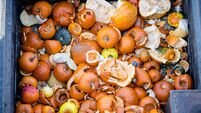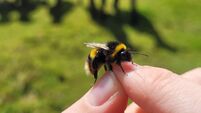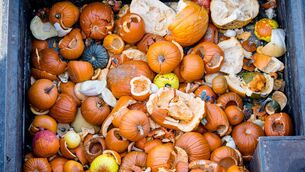Anja Murray: Off-leash dogs can cause havoc with wild birds
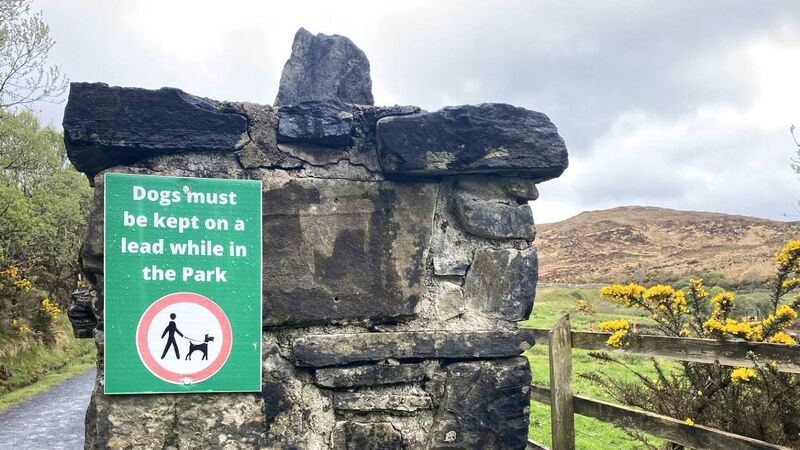
Dogs must be kept on a lead while in the park — sign at Connemara National Park. Picture: Anja Murray
I am a big fan of dogs. I loved my last dog, Tito, so much that I dedicated my book, , to him.
Being so attuned to one kind of animal, though, can cause a bit of a blind spot. As we venture out for walks a little further afield than the local park, we experience the delight with which our beloved dog sniffs out new places. We see things from their perspective.
In the woods, with primroses and dog violets in flower beneath the emerging leaves of deciduous trees, we are happy that the dog is getting a bit of a runaround in such an idyllic scene.
At the coast, with the energy of the sea and the openness of the landscape, our dearest doggies love to run and play along sandy shores. But seeing how intriguing the world is from our dogs’ perspective skews our consideration for other creatures, who are often forced to abandon whatever it is they were doing when our bounding pup came tearing through.
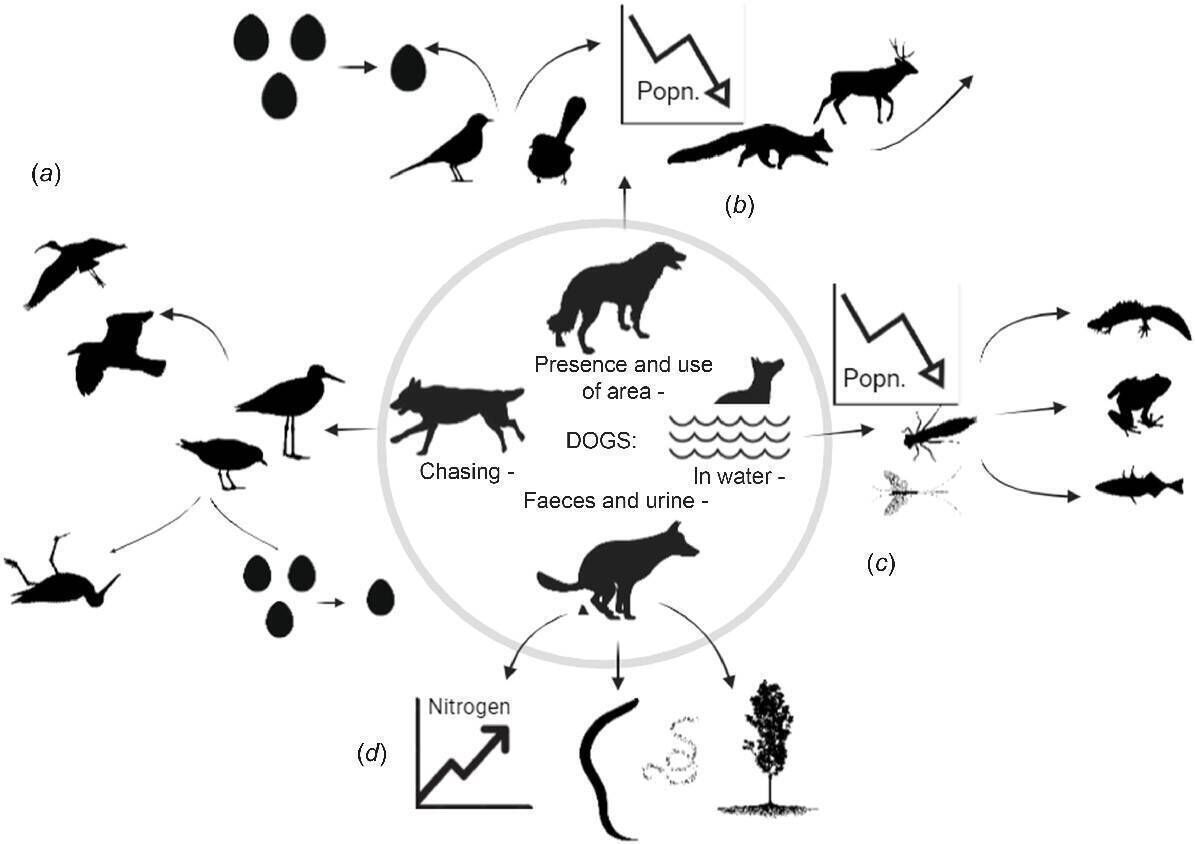
Let’s revisit the woodland scene... from the perspective of a woodcock. These ground-nesting birds are excellently camouflaged among the woodland floor, where during April, females are minding a clutch of eggs in a little hollow in the ground, whilst also finding food for herself, without any assistance from a mate. During May, she alone will be feeding and protecting her brood of helpless little chicks.
As soon as she hears the pounding of a four-legged predator, she will be alarmed and on high alert. Perhaps she will tuck some of the chicks under her wings in an attempt to get to deeper cover, or maybe she'll just sit tight, terrified, until the threat has passed.
The stress of such an event for the brooding woodcock can deplete her stamina and undermine her chances of successfully rearing her chicks, especially if incursions by dogs are frequent.
Out along the coast, it is during winter when dogs pose a major threat to wildlife, with wintering geese on their feeding grounds being constantly pestered by energetic dogs running about.
Sandymount strand in Dublin is one such place where I always find it distressing to see Brent geese, a threatened and legally-protected species, having flown all the way here from Arctic Canada for the winter, constantly having to rise from their feeding areas because of dogs who are left off the lead for a run.
This is a common scene all around Irish coasts, where dog walkers enjoy being out in sandy estuaries but don’t pause to think about the original inhabitants of these habitats. For the geese, the energy expended in lifting and settling again so often makes it impossible to stay and feed.
Oystercatchers, curlews, sandpipers, plovers, and whimbrels, all among the most vulnerable of our native birds, are similarly impacted by off-leash dogs.
Now, during spring, all along coastal grasslands from Mayo down through Connemara and Kerry, skylarks are brightening the air with their gorgeously incessant song. A barely visible spot in the sky, males hover high overhead while pouring out their famously melodic verses, letting potential mates know that their skill and stamina are exceptional.
Skylarks nest on the ground, with just a shallow scrape among low vegetation, in which a clutch of well-camouflaged eggs blend in perfectly with their surrounds. Being invisible but exposed makes their nests vulnerable to disturbance, and our free-running dogs can, at best, terrify nesting skylarks, or at worst, trample nests, break eggs, and disturb or even kill hatchlings. When dog disturbance is near continuous, parent birds are driven to abandon their nests entirely.
Because the population of skylarks is in freefall, it is imperative that we give the remaining breeders every chance to through the spring and summer months to breed successfully.
Many of us have been getting out in the hills during the Easter holidays, enjoying the good weather and exceptional scenery in the uplands. When we hike up a mountain trail, heathery habitats are where ground-nesting birds are now tending nestlings.
Curlew, golden plover and hen harrier are very much threatened birds, facing the massive challenges of accelerating habitat loss and fragmentation, which makes it harder and harder for them to find suitable places for nesting. This means that every nest and every fledgling makes a significant difference to the survival of these species here.
Many of the challenges facing threatened ground nesting species are hard to overcome, requiring significant changes to how we manage land, from farming to forestry. But the threat from dog walkers is one that is entirely possible to eliminate. It simply requires a better understanding among dog owners of the implications of dogs off leads.
New research published this month concludes that pet dogs have “extensive and multifarious” environmental impacts, including disturbance to wildlife. The review collates research across Australia, though many of the findings are equally applicable here.
The authors describe how pet dogs are “implicated in direct killing and disturbance of multiple species, particularly shore birds, but also their mere presence, even when leashed, can disturb birds and mammals, causing them to leave areas where dogs are exercised”.
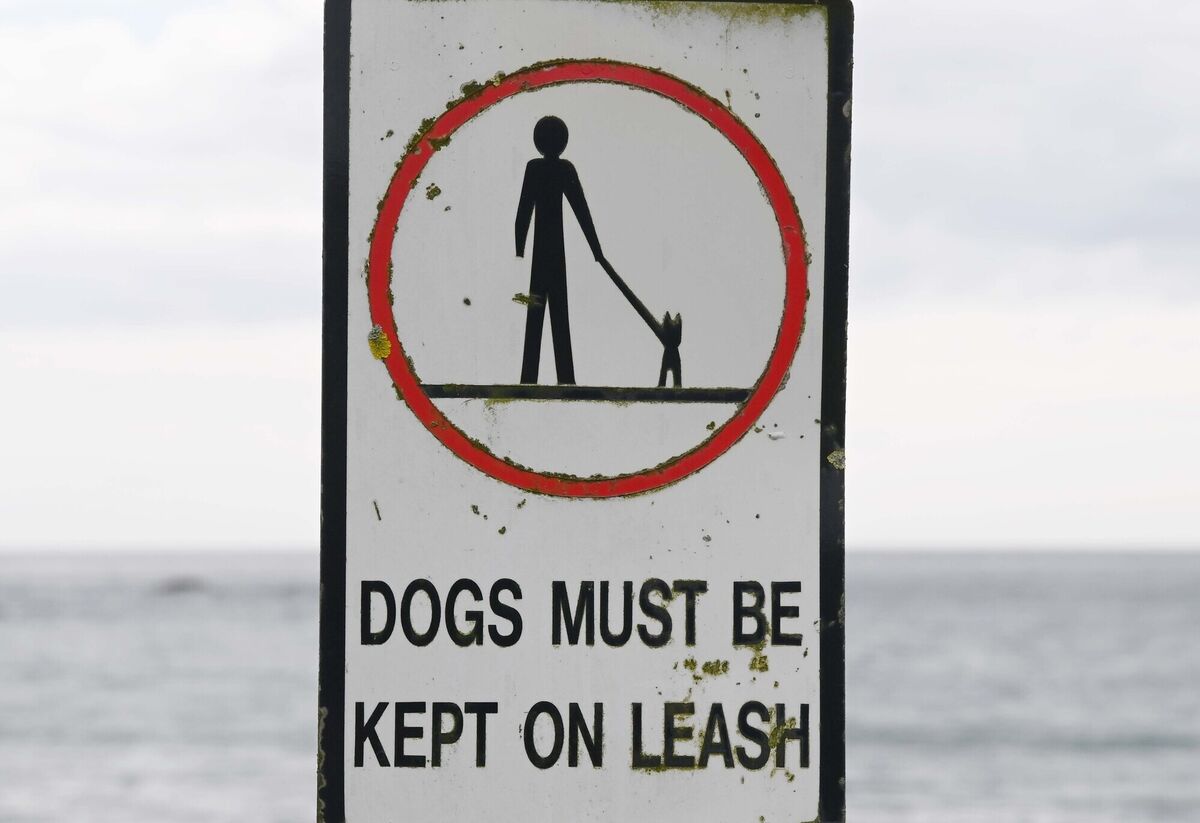
Some countries have brought in specific laws to protect vulnerable birds from disturbance by dogs. In Norway, for example, a country-wide leash law is in place throughout the nesting season, from April 15 to August 20. Here in Ireland, most National Nature Reserves have signs up at entrances specifying that dogs must be kept on a leash.
Having a canine companion can have enormous benefits for our mental and physical health. Life would indeed a lot less enjoyable without the company of dogs. But for anyone out walking in woods, coastlines, fields or uplands at this time of year, consider leaving the beloved pooch at home, and if they must be brought along, stick to well-trodden paths and always keep dogs on a lead.




